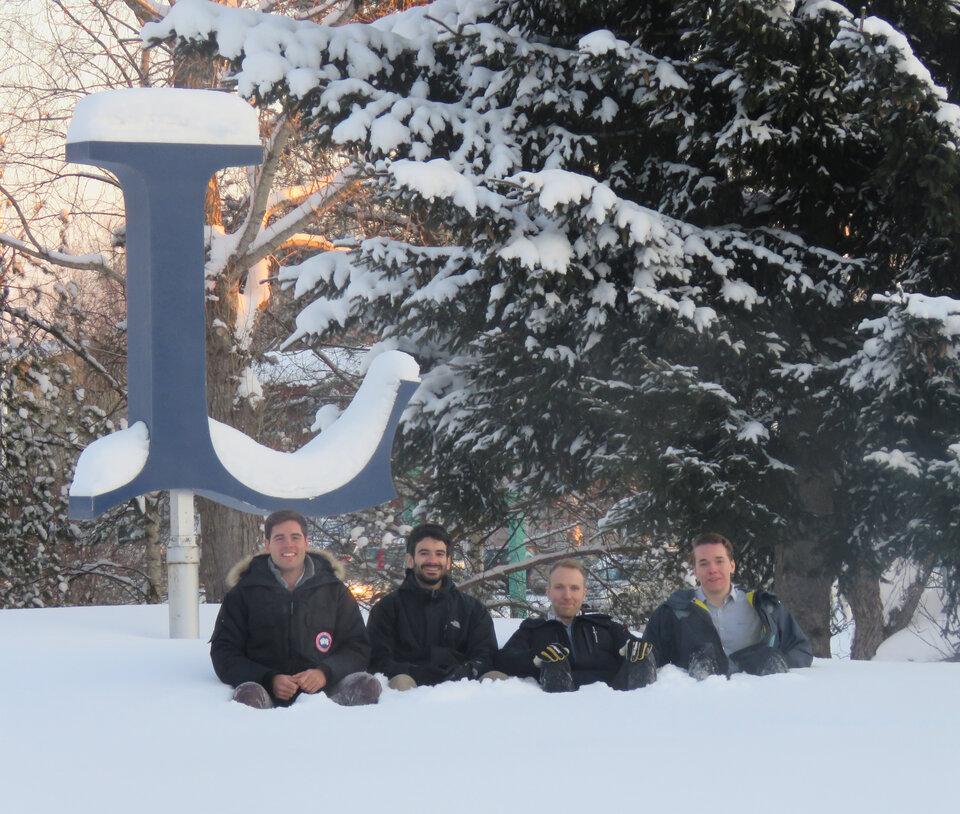Meet the teams: PVT-GAMERS
The PVT-GAMERS team is composed of four Ph.D. candidates from the Luleå University of Technology (LTU), in Sweden. Their experiment aims to validate in a representative environment a new gauging method developed at LTU for accurately determining the remaining propellant mass in spacecraft tanks used for electric propulsion systems, such as Xenon.
![]()
![]()
Validation of a new gauging method to accurately determine the remaining propellant mass in spacecraft tanks used for electric propulsion systems, such as Xenon.
![]()
![]()
| University | Luleå University of Technology, Sweden |
| Endorsing professor |
Prof. Dr. Maria-Paz Zorzano Mier1,2 1Division of Space Technology, Department of Computer Science, Electrical and Space Engineering, Luleå University of Technology, Luleå, Sweden. 2Centro de Astrobiologia (INTA-CSIC), 28850 Madrid, Spain. |
| ELGRA mentor | TBA |
| Team | Álvaro Soria-Salinas, Riccardo Lucchese, Erik Nyberg, Tobias Hultqvist |

The effective use of propellant on a spacecraft is vital to ensure the success of its mission and to extend its duration. In the new Electric Propulsion (EP) era, high pressurised Xenon at supercritical stage within a tank is usually used as a propellant for spacecraft. The new demands on longer missions have quadrupled the required amount of Xenon, challenging the existing gauging methods for measuring the propellant consumption. As a result, the accuracy required concerning density measurements is much higher nowadays than the one required in past missions.
With the aim of solving this pressing need, our team presents the ‘Improved Pressure-Volume-Temperature Gauging Method for Electric-Propulsion Systems’. This method is based on the use of the Redlich-Kwong equation of fluid state. It will be applied to small pressurised Xenon gas containers under hyper/micro-gravity cycles at a stationary cooling. In this way, it will be possible to reproduce on-orbit, thrust phase, external accelerations and fuel transfer conditions over a propellant tank at its End Of Life (EOL) stage, i.e. scarcity of propellant and consequently low pressure within tanks.
Previous laboratory results under gravity and supercritical fluid state [Soria-Salinas, et al., Feb. 2017], show for Carbon Dioxide at a pressure of about 70 bar, just below its critical pressure, that the error of the mass retrieval using this new gauging method is only 0.1% of the initial mass at launch. This improves by a factor 8 the accuracy of the standard PVT retrievals. However, non-gravity effects and lack of convection lead to density anisotropies and small accelerations within the propellant tank, whose effects into the accuracy of the method need to be characterised.
The PVT-GAMERS experiment would allow us to test and validate the retrieval method and increase its Technology readiness Level (TRL) from 4 to 6, which would allow the generation of a potentially useful and easily implementing tool for current propellant management techniques. This could provide the upcoming spacecraft generation with a practical and higher accurate PVT gauging method which could constitute a turning point at the currently space industry, especially in long-term space missions, from currently launched CubeSats or telecommunication satellites to huge future projects using electric propulsion such as the Deep Space Gateway space station.

